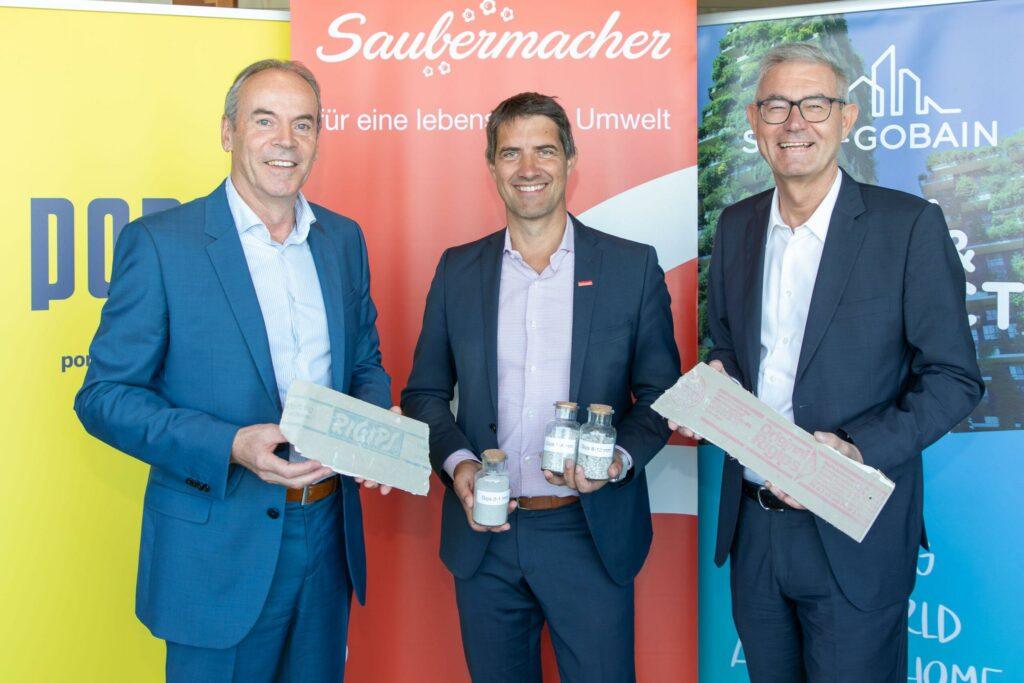Cross-industry partnership realises “zero waste vision” for plasterboard
The new plant will have an annual capacity of around 60,000 tonnes and will therefore be able to cover the demand in the east of Austria. This will not only conserve Austrian raw material resources, which are not infinitely available, but also the limited landfill volume. This joint initiative will proactively fulfil the nationwide landfill ban for plasterboard that will come into force on 1 January 2026 and represent another milestone in the Austrian circular economy. Federal Minister Leonore Gewessler also welcomes the presented gypsum-to-plaster project. An investment sum of 7 million euros is required for the realisation, divided between the gypsum-to-gypsum (GzG) recycling plant and the logistics solution. Commissioning at the Saint-Gobain site in Stockerau is planned for mid-2025.
Gypsum-to-gypsum recycling – the circular economy is teamwork
PORR and Saubermacher are strong players in the demolition and disposal market, which ensures the delivery of plasterboard waste. Among other things, recycling specialist Saubermacher offers new digital logistics solutions to transport the gypsum waste from construction sites to the processing plant in a transparent and traceable manner. PORR recycles around 2 million tonnes of construction waste every year, making it the largest recycler in the Austrian construction industry. The majority of this replaces primary raw materials at the company’s own construction sites and plants.
After processing, the recycled gypsum (RC gypsum) is transported by rail to Bad Aussee, where the drywall specialist Saint-Gobain uses the recycled material to produce new plasterboard (RIGIPS boards). Up to 40 per cent recycled gypsum can be used in a new plasterboard. This conserves the raw material natural gypsum in equal measure. “Only a cross-sector partnership like this makes sustainable and economical recycling possible,” emphasised PORR, Saint-Gobain and Saubermacher in unison at a press conference. The economic efficiency of the project is the key to its success, as it is currently still extremely cost-effective to landfill offcuts and dismantled plasterboard. As a result, almost 100 per cent of the demolition material has ended up in landfill so far.


